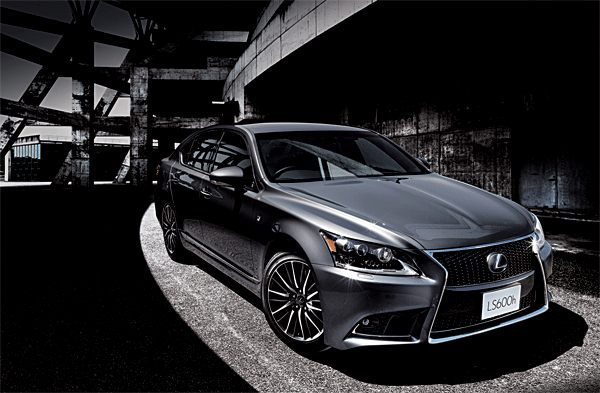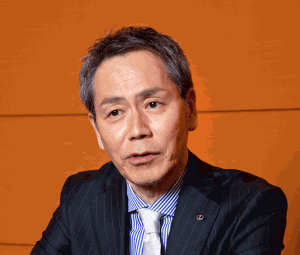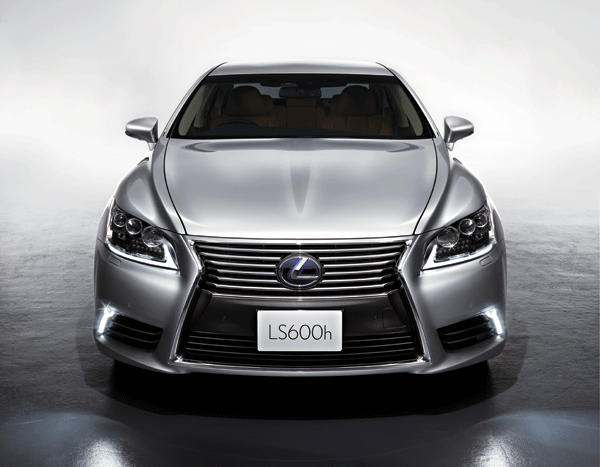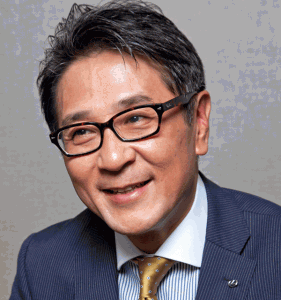In 1988, Lexus announced itself to the world and reinvented the concept of automotive luxury.
Half a decade of research and development – involving 1,400 engineers, 450 prototypes and 4.5 million kilometers of testing – had followed a secretive meeting on the fringes of a company conference that resulted in Eiji Toyoda, then chairman of Toyota, issuing a challenge to his engineers and designers: to build the best luxury sedan in the world.
The Circle F project was born that day and would go on to create the first LS 400, surpassing the unprecedented targets Ichiro Suzuki, the project’s chief engineer, had set. A now iconic TV commercial in the US showed a delicate tower of champagne glasses on the bonnet of the new flagship model holding steady even when the car simulated a speed approaching 140 mph and, with that, a new symbol of luxury had arrived. Lexus stunned motor journalists in the US and was destined to provide the new standard for car lovers.
Since then, Lexus has come back ‘home’ to Japan and established itself in the marketplace, building its reputation on luxury but also on safety, innovation, environmental sustainability and a superior quality of owner experience.
Lexus in Japan
If you are buying a Lexus LS series here in Japan, you can take advantage of the Japan only L-Select customization system. There are six ‘worlds’ from which to choose the look and feel of your interior. Presidential Suite has luxurious brown leather and a rear seat that gives a supreme experience, whereas Escape Journey conjures the image of a Mediterranean style yacht and Japanese Modern reflects the ultra-contemporary design of Lexus’ homeland.
“The LS has always appealed to customers who demand the best. They appreciate the highly refined and luxurious nature of the Lexus flagship,” says Hideki Watanabe, the Chief Engineer of the LS, after a launch event in San Fransisco in July.
“At the start of the LS development programme, I had to consciously broaden my horizons, focusing on the finer things in life from the worlds of art, design and technology – a first step towards creating the most sophisticated LS yet, to satisfy the world’s most discerning customers.”
Watanabe, back in Tokyo, talks with relish about the challenges he faced as an engineer. Development of the new LS involved making around 3,000 changes to its specifications and design but, for Watanabe, none is more important than the next.
“We are often asked our favourite but it’s impossible to say. For an engineer, the car is like our child. It would be like asking a father to say that he loved his child’s eyes more than his or her ears or nose. That just cannot be said. I have devoted myself equally and completely to the project as a whole and even though engineers can never be satisfied 100% – we always have to strive for more – I have no regrets.”
But every car has a talking point. The dynamic profile of the Spindle Grille at the front of the car, which almost allows you to ‘see’ how air flows around the car, is a symbol of the balance of the philosophies of power and finesse which have gone into the design. It is the stand out feature when many people first set eyes on the new LS. The direction Watanabe gave to his team of designers and engineers would be to be dynamic and bold and the grille is a big part of that.
The sum of the parts really is key to the feel and look of a car and Watanabe explains that when he told his team to “be dynamic, be bold,” it was not his intention to end up with what marketing guys see as “sexy” in the car’s appearance.
“The Spindle Grille for example is a key part of the car’s design concept but we had to keep the fundamental philosophy of the LS when unifying that with the silhouette of the car. We brush it up again and again through many processes and finally, we seek a beautiful shape. Only then does it become something which people might decide to call sexy.”
As an engineer it is clear Watanabe understands the connection between his work behind the scenes and the driver at the wheel of his creation. With all the steps involved in creating the new model, could it be frustrating when drivers see the whole and don’t appreciate the parts that make it up?
“Actually we have worked on a lot of small things and made many efforts to fine tune braking and handling, for example, and drivers are recognizing that and embracing it.” So Lexus owners appreciate the small things? “Yes, and on the other hand, if we were not pursuing perfection, drivers would quickly find it was not good enough.”
Safety & Comfort
The new LS has gone through changes and at the heart of many design concepts and technological innovations is a focus on safety and comfort. “Steering is safer and more secure but handling and reaction is quicker. We have improved riding comfort and we don’t sacrifice anything for that,” says Mr. Watanabe, “We have also improved quietness to maybe the top level in the world. Our customers demand that our targets for noise level are set very low so we have no option but to use such things as the hollow chamber noise reduction wheels, which reduce road noise.”
The LS has an Advanced Pre-Crash Safety system with collision avoidance assist which is designed to provide the earliest possible warning of objects in the road – its sensors working day or night. Lane Keeping Assist and impressive Blind Spot Monitors – with alarm lights in the wing mirrors – help the driver focus on enjoying the ride while feeling secure on the road.
Get Out of Town
Not only will the impressive handling of the new LS make longer drives out of the city comfortable, it will make them more fun. On the highway to the mountains with family on the weekends, perhaps, the famous Lexus ride comfort and quietness factor really come into their own.
And because these luxury cars are built for the driver, the dynamic stability going into corners and the complete responsiveness will reward you with complete confidence-inspiring security. As a result, you will experience what Lexus call ‘increased driving pleasure’.
Technology will give everyone in the vehicle an enjoyable ride; its build quality is so high that you can almost take for granted the luxury feel and finesse of the interior features. Lexus has upgraded the infotainment system in the LS. A Blu-ray player in the rear seat entertainment system as well as a 12.3” LCD multi display screen – the industry’s largest – in the front add to an impressive audio system. The Mark Levinson Reference Surround System is the finest way to enjoy your music and with HDD capacity and internet connectivity, you could not want for more.
Most importantly, the Lexus is a car you will want to drive and the Drive Mode Select feature will help you get the most out of that. Choosing from Eco mode through Comfort, Normal, Sport S and Sport S+, you will find your optimal performance and handling characteristics.
The guys behind the wheels at Lexus
That first TV commercial in 1989 showed Lexus as a symbol of luxury,” says Mr. Takada, “but now is the second generation of Lexus.” “Our President, Mr. Akio Toyoda of Toyota Motor Corporation calls our latest moves a ‘new chapter of Lexus’.
We now have more of an emotional feeling. If you are thinking rationally – about comfort, reliability and value for money in the premium market – there is no reason to choose our competitors, we feel, but we had to change some of our focus to the emotional values that car lovers value, like simple driving pleasure.”
“Our pursuit of perfection has led us to believe that we can be the next standard of what we call progressive luxury. From one point of view there is the progressive: the environmental and social concerns and the innovation that comes from intelligence, research and design and so on.
On the other side are the ideas of pleasure and status that go with luxury. If we achieve a really high level of all of those things, we can be the progressive luxury car of the 21st century.”
“I really admire what some other car makers have done and I love and respect foreign brands. Audi is splendid recently, for example, especially since 2000 when with the A4 they changed strategy. The TT was a turning point, too. It is an amazing product that enabled them to move into a new territory – Mercedes maybe had the ‘status’ and BMW the ‘sport’ side (of the luxury car market) but if you were to drive Audi’s car, they taught people, ‘people would think you were very cool’ and that was a smart move.”
“But we should not follow Audi. We have to produce a new way. We have strengths. We have hybrid technology for the environment and we are recycling in the factories. We are a very eco-friendly company. That is one of our core competences but we need more than that to catch the heart of the customer in the premium category.”
LED lights are used in the interior and tail lights and in the low-beam headlights, one key to the eco-strategies that Lexus has been pushing for. Using recyclable plastics derived from kenaf, a fibrous member of the hibiscous family as well as components derived from sugar cane have further helped reduce the car’s carbon footprint.
In their efforts to create a car that could compete in terms of performance, a key factor in capturing the emotion of the driver, says Takada, “One of the turning points was the LFA, our super sports car.” Mr. Toyoda was deeply involved in the development of the LFA and was passionate that it would bring results for the company, Takada explains, “We only made 500 units but we got a lot of information and knowledge from its development. Driving performance is much improved due to many things we directly learned during that project.”
“We want to disprove the notion that silence on one side and driving pleasure on the other can not go hand-in-hand. We are striving to make them compatible; that’s what we want to achieve, as a value for the customer.”
Lexus in part sponsored this feature, which originally appeared in our November magazine.
Portrait photography by Norihisa Kushibiki. Other images courtesy of Lexus who retain copyright.












